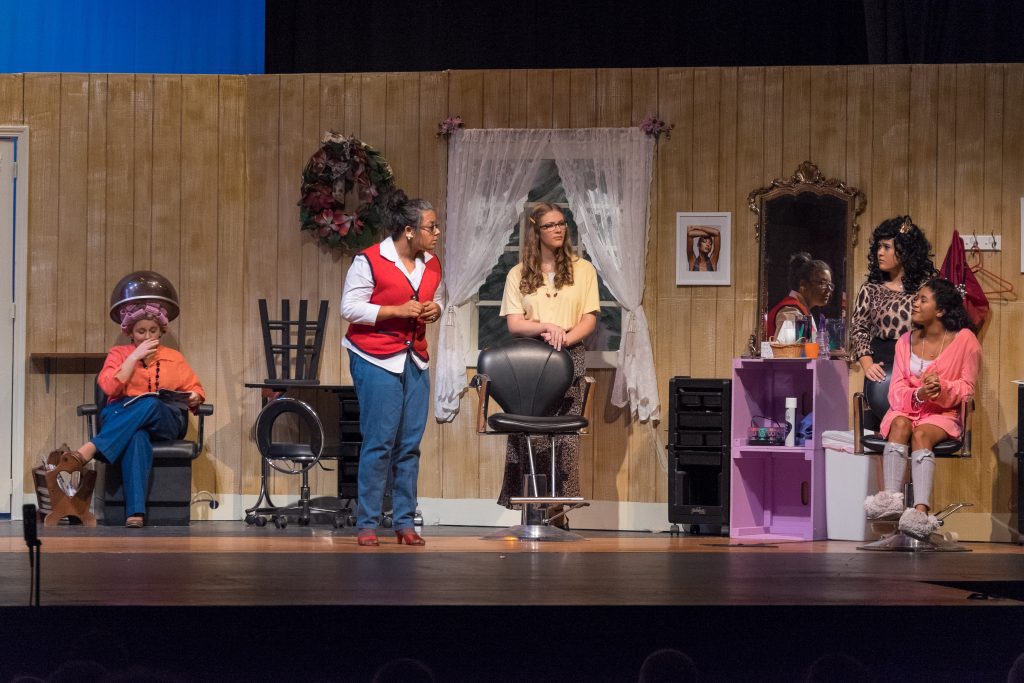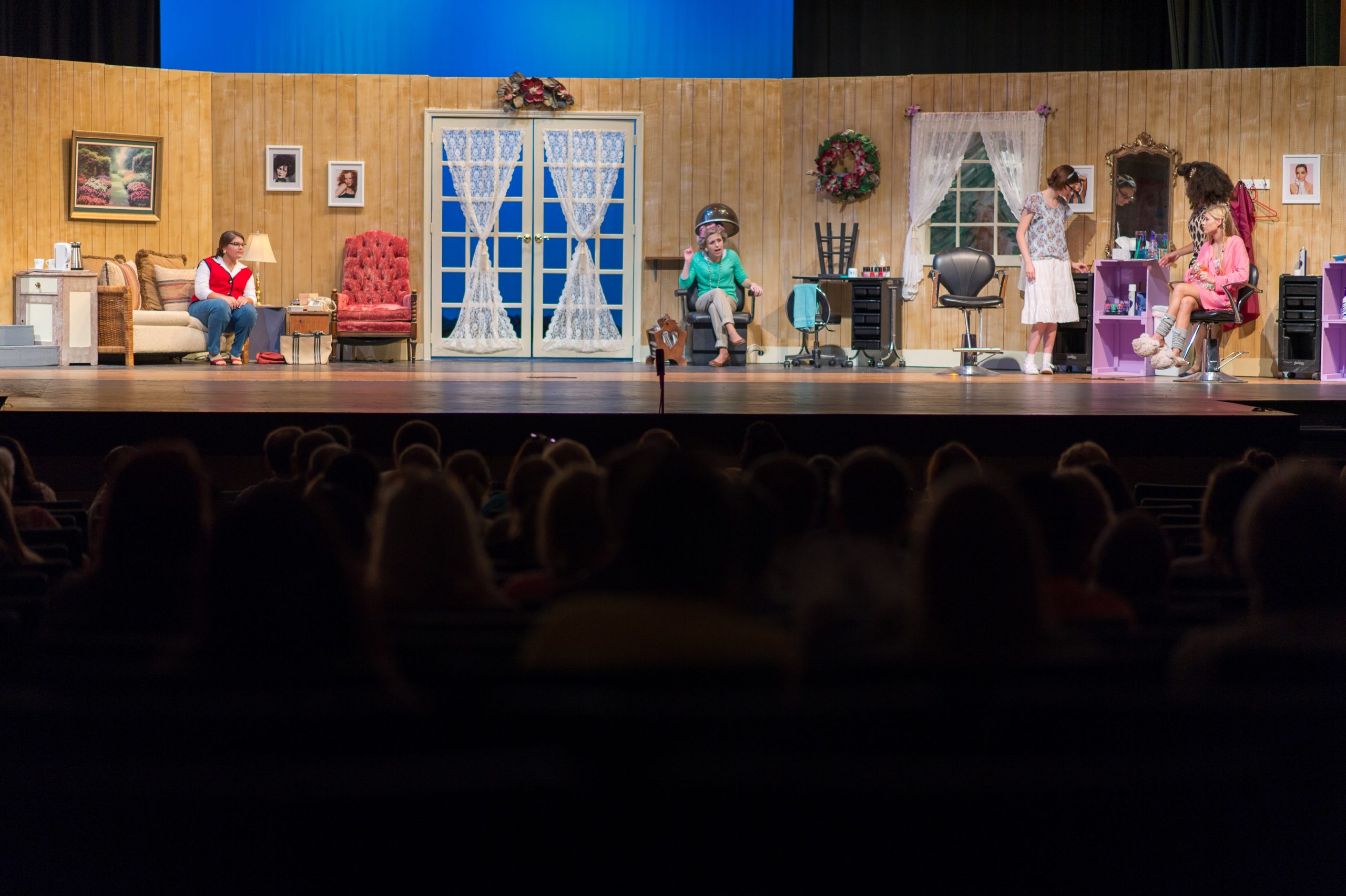| Nikon D4, Nikon 85mm ƒ/1.8G, ISO 140, 1/100 |
Theater
A great place to practice your craft is in the theater. For this production of Steel Magnolias at Roswell High School, I sat in the back row for a good reason.
On the back row, you can see the actors’ feet; on the front row; you often find the angle that has you missing their feet. Another great reason is you can shoot above the heads of the audience and be somewhat out of the audience’s view.
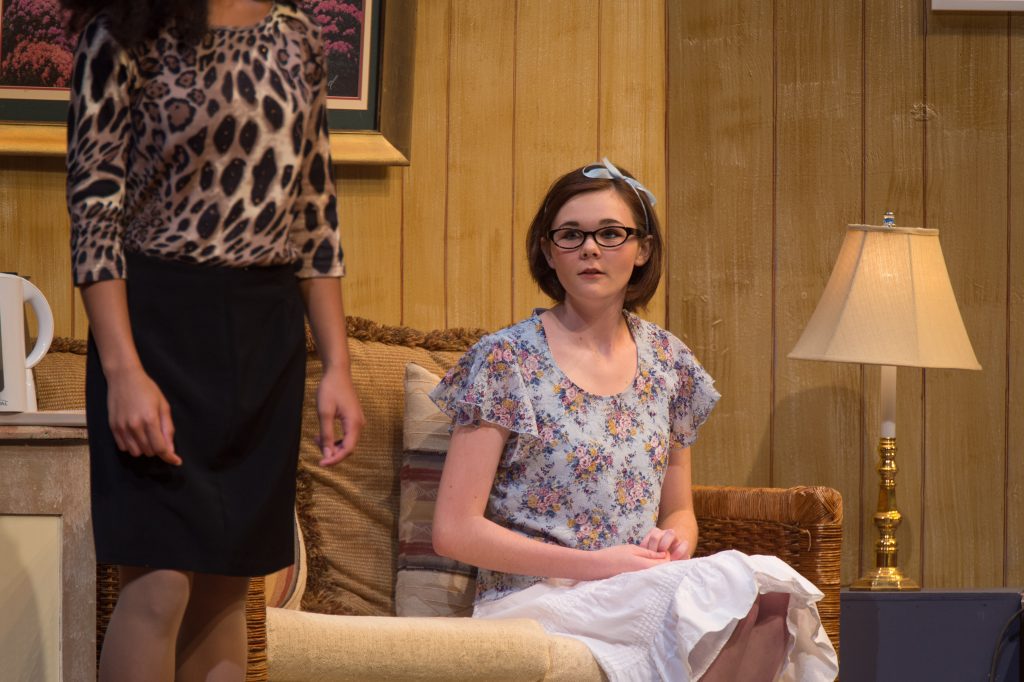
You can use your long glass for more than a football game. So here I am, shooting on a monopod and sitting on the back row. I am shooting zoomed-in with a 600mm lens at ƒ/5.6. From the first photo to this one, I can get pretty tight on the actors on the stage.
So do you shoot wide or tight? The answer is simple—BOTH.
Lighting
The good news is the stage crew and lighting crew have taken care of just about everything for you. Here I just set the white balance to tungsten, found the correct exposure, and just shot away. However, the lighting changes just once in the production to a darker scene, which makes sense as the color temperature is a little warmer.
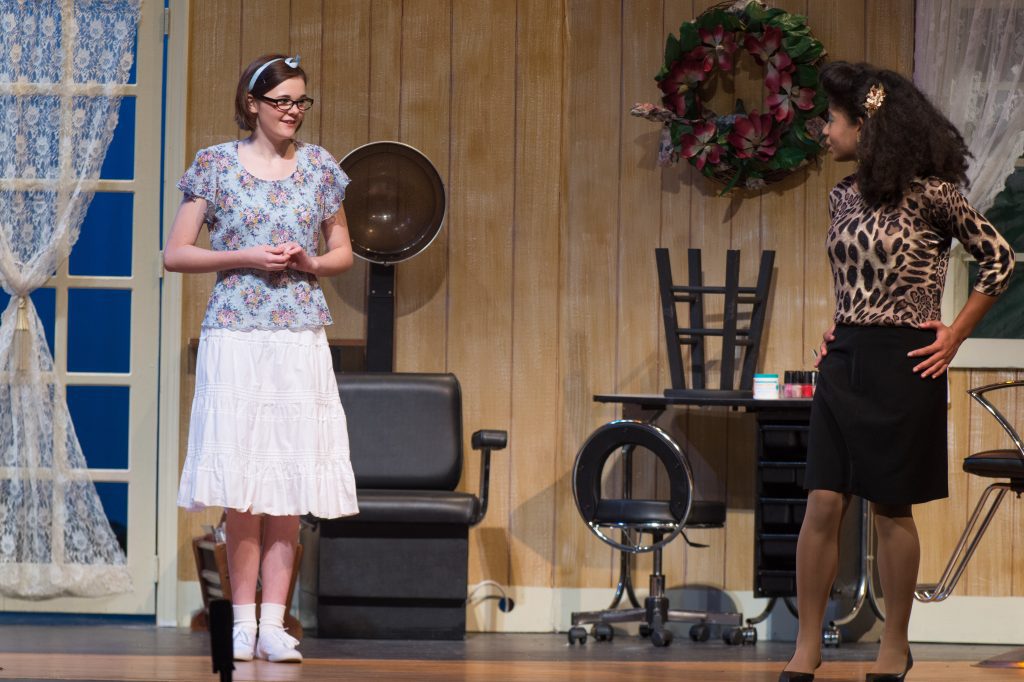
I prefer shooting with a cinematic approach. Cinematic is where you are thinking of filling the frame so that the viewer will experience the photos, assuming more of the screen size in a movie theater. So the size is more about proportions of 16×9 or 3×2. You are not thinking of cropping to a square or vertical.
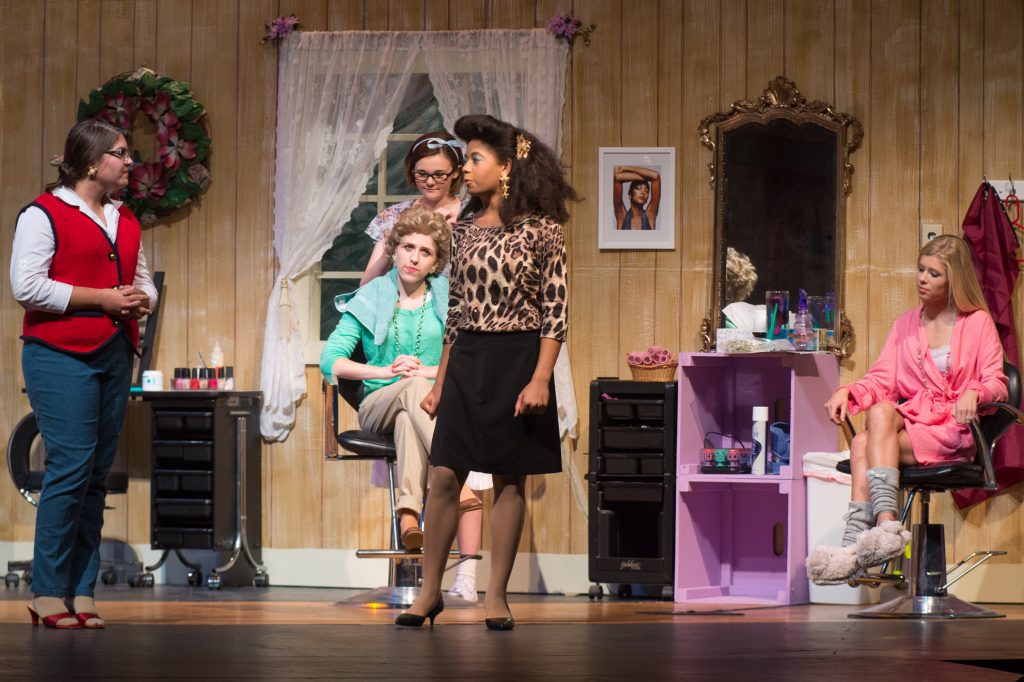
I choose to fill the frame of my Nikon D4. Filling the frame means watching the frame edges to see what to include or exclude. Here in this photo, I am letting the actors on either side determine the width, and I am watching the curtains and the feet to be sure they have a little room. Too much higher, and you see the top of the set.
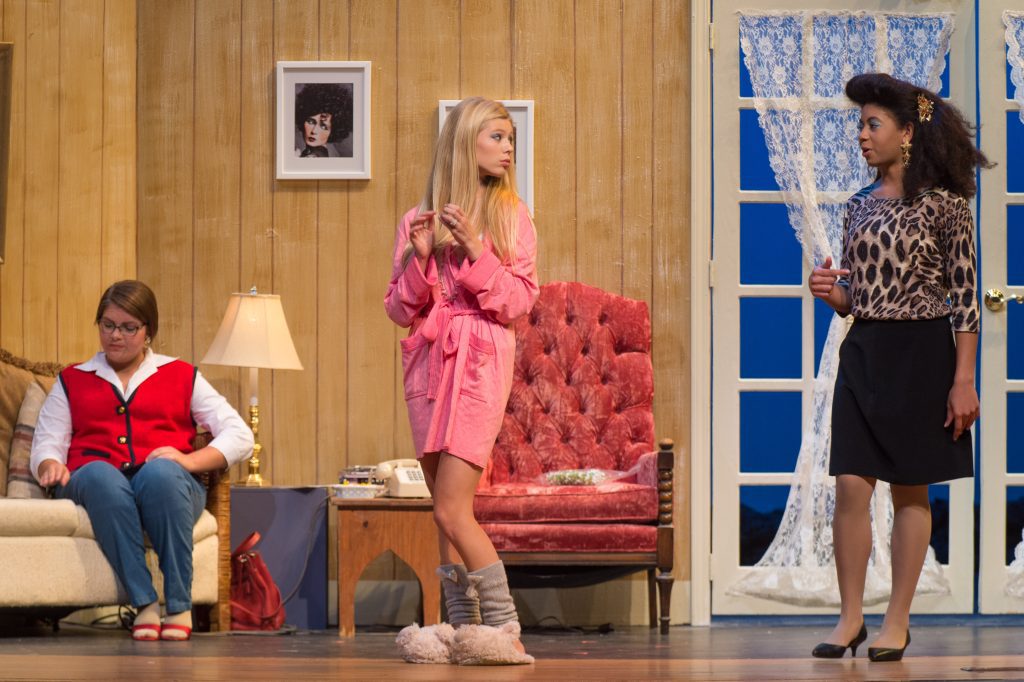
Now I am also thinking about what the play is all about. The actors are in a hair salon, and when I think of this place, I think of the gossip. So, I could have cropped this photo to show the two on the right much tighter. But instead, I am letting the actress sit, and the picture up on the wall shows how this is a place for eavesdropping.
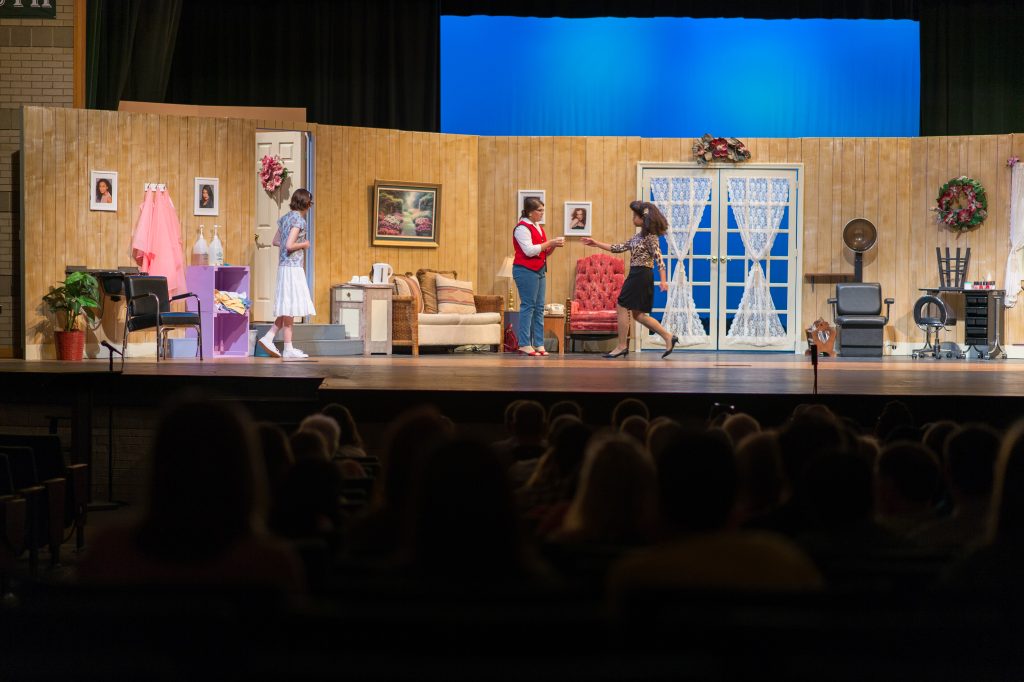
Sometimes I include more around the edges to help establish the scene inside a High School theater. I am intentionally showing the audience as they watch the production.
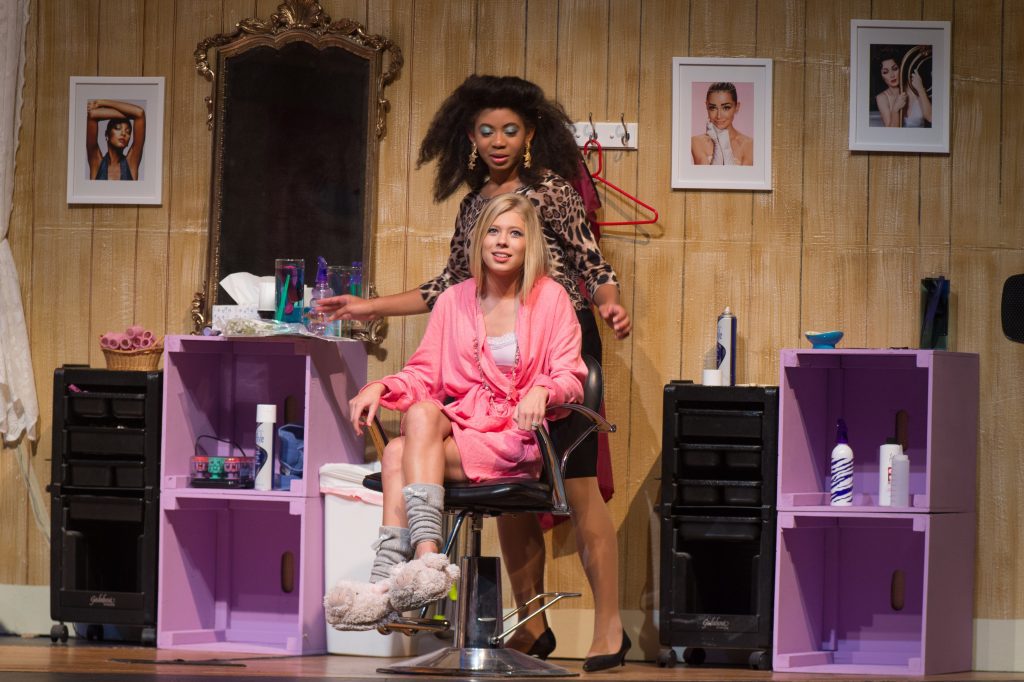
In this last photo, you can see that the bottom of the image includes the bottom of the chair, and the top includes the pictures on the wall. Those photos are then proportioned left to right to keep the whole frame filled. Now, if this were for a print piece, I may crop a little on the left and right, but this is a great example where you make the very best you can of the composition. Again, I tried to go tighter but thought the bottom of the chair helped to anchor this photo much better.
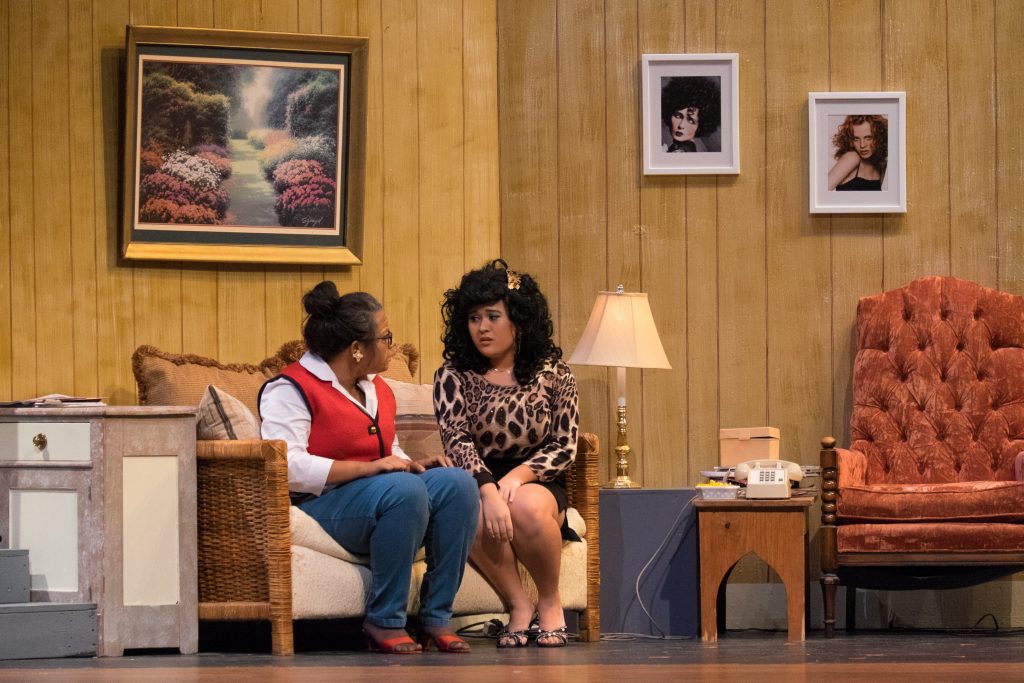
I returned the second night to get some photos with the show’s second cast. I decided to shoot some of these photos with my Fuji X-E2 with the FUJINON XF 55-200mm ƒ/4.8 lens. The Fuji camera worked great.
